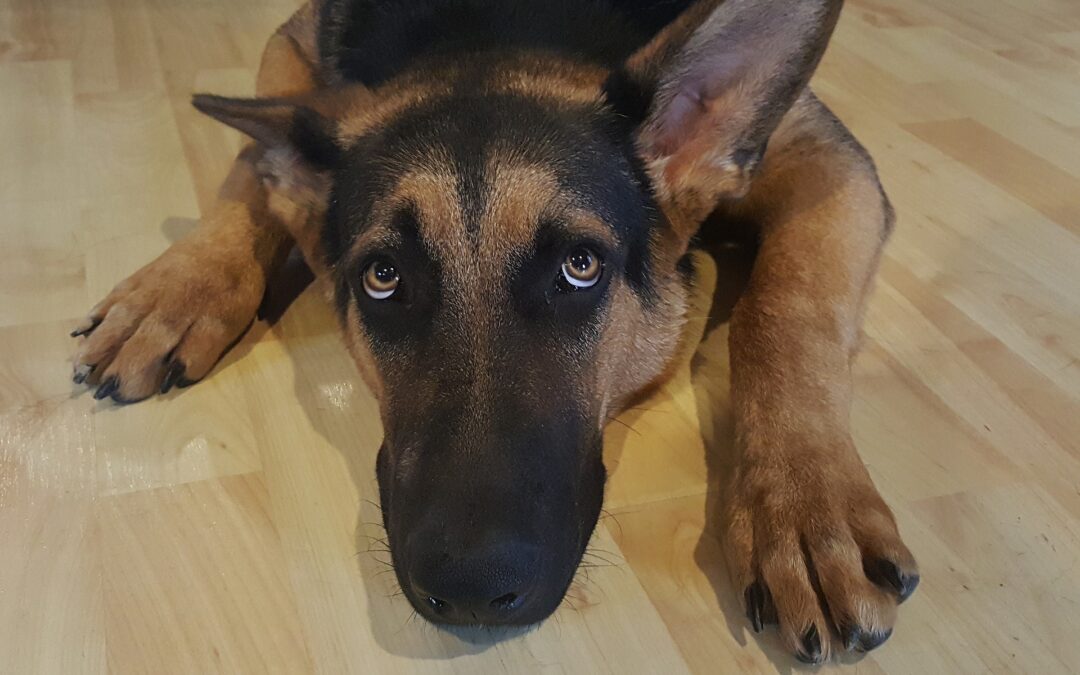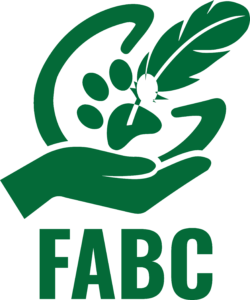
Anxious Adolescents
THE PANDEMIC PUPPIES WHO ARE NOW ANXIOUS ADOLESCENTS – HOW CAN WE HELP THEM?
What was it about the development of puppies born in the Pandemic that has resulted in so many of them now being fearful, and often fearfully aggressive, at the vets?
Now that we have this population of anxious adolescent dogs, who are prone to extreme fearfulness when exposed to certain stimuli, how should we be dealing with them when they come for veterinary treatment?
The Pandemic puppy boom
Many of the issues around people obtaining puppies during the Pandemic were well-publicised.
- There was an increased demand for puppies as many people perceived that they had time to care for a puppy when they were locked down and working from home.
- Many thought that a puppy would be something positive in their lives and the lives of their family and make up somewhat for the restrictions of the pandemic.
- Many of these people were first time dog owners with little experience of caring for a puppy, and many also had children.
- As demand increased, so did the prices charged for puppies.
- This fueled an increase in unscrupulous breeding practices and illegal importation of puppies, especially as the supply of puppies from responsible breeders was exceeded.
- The Lockdown restrictions made it easy for unscrupulous breeders to operate, by providing ideal justification for preventing potential buyers visiting the litter prior to purchasing puppies, or to see them with their mother.
- It appeared more justifiable to deliver puppies or arrange to meet the purchasers somewhere other than their premises.
Dogs Trust’s National Dog Survey provided data which supports these factors – they found that by March 2022, Pandemic puppies (who were acquired after 1st March 2020 under 6 months of age) made up 23% of UK dogs. You can check out the details of the survey on https://www.dogstrust.org.uk/latest/2022/pandemic-pups
Why did all this matter?
Unscrupulous breeders who were keen to jump on the band wagon of increased demand for puppies and the high prices they could command, were probably not selecting their breeding stock on the basis of temperament and were breeding from any dogs they could get their hands on.
Parents who have a genetic tendency to fearfulness and poor resilience to stress have a high chance of passing these traits onto their offspring.
If kept in suboptimal conditions on puppy farms, pregnant bitches are likely to be exposed to high levels of stress, which is known to have a deleterious effect on the development of the HPA stress axis of developing fetuses, so that the puppies are less resilient to stress in later life. If bitches are poorly nourished, this can also negatively impact the development of their puppies, including an effect on their memory, learning ability and ability to form relationships. During the pandemic, even pregnant bitches who were household pets may have experienced stress due to the constant presence of the rest of the household including noisy children, and other changes to their normal routine.
So, many of the pandemic puppies had a poor start in life, even prenatally.
Habituation and socialisation
Now we come onto another critical stage of puppy development – the so-called ‘sensitive period’ between 3 and 14 or so weeks of age. This is the time when puppies are most receptive to learning that the sights, sounds and scents that they are gently and sensitively exposed to are a normal part of their environment and nothing to be worried about. They are in a state of parasympathetic dominance during the time they are with their mother so recover most effectively from novel experiences before they are weaned. Even though puppies are still in their sensitive period when they go to new homes at 8 weeks of age, what happens at the breeder’s is particularly significant. Without appropriate socialisation experiences, puppies can be fearful of new stimuli as they grow up. Puppy farm puppies are particularly at risk of this as they are likely to be reared in barren pens.
In ‘normal’ times, puppies born in a family home are often exposed to appropriate stimuli without the owner of the bitch making particular efforts to habituate them to handling and household appliances or socialise them to a range of types of people. These things just happen as part of normal family life, when relatives and friends are keen to meet puppies and interact with them. This was not possible during the Pandemic when families were isolated and no-one had visitors to the house.
When puppies go to their new homes at about 8 weeks there is a continued need for them to be gently exposed to new situations, new locations, new people and other dogs to continue their socialisation experience. During the Pandemic there were again several significant reasons why these socialisation opportunities were not provided for a lot of puppies.
During the periods of Lockdown, many Pandemic puppies had minimal contact with unfamiliar people, minimal journeys in the car and minimal experience of new locations and environments, both before and after purchase by the new owners. They were not able to attend in-person puppy classes and not all owners saw the point of on-line classes. On-line puppy classes obviously couldn’t provide opportunities for puppies to learn about other puppies but were a good source of advice for the puppy owners who booked them. Depending on when individual puppies were born in relation to the strict Lockdowns and the periods of increased freedom, the Pandemic would have had a greater or lesser effect on their behavioural development through puppyhood and towards adolescence.
The owners of a lot of Pandemic puppies were at home all the time due to home working and home schooling. Many of these puppies were not habituated to being left alone for short periods, or taught to relax on their own, as the owners were not aware of the need for this. This explains why a large number of them show distress when left as adolescents.
Pandemic Vet visits
The early visits of Lockdown puppies to the vets involved car journeys. For some, almost the only other time they’d been in a car was when they were transported to their new owners’ home – when they had just been removed from their mother and siblings, were being handled by new people possibly including children, and quite probably feeling nauseous. Many of them remained anxious about car travel after this.
After the journey to the vets, puppies were taken from their owners to be checked and vaccinated, or treated if they were unwell, so were removed from their source of safety and reassurance. Many were fearful of unfamiliar people, especially those of unusual appearance such as vet staff wearing masks, aprons and visors. There was very little opportunity for puppies to have social visits to vet practices when vets were only seeing emergencies. The overall result was that these puppies easily became sensitised to the veterinary practice when they experienced anything even slightly aversive.
Anxious adolescents at the vets
So we can explain why so many of the Pandemic puppies are now fearful at the vets. The next question is how we should deal with them, and any other anxious and fearful puppies and juvenile dogs who are presented to veterinary practices.
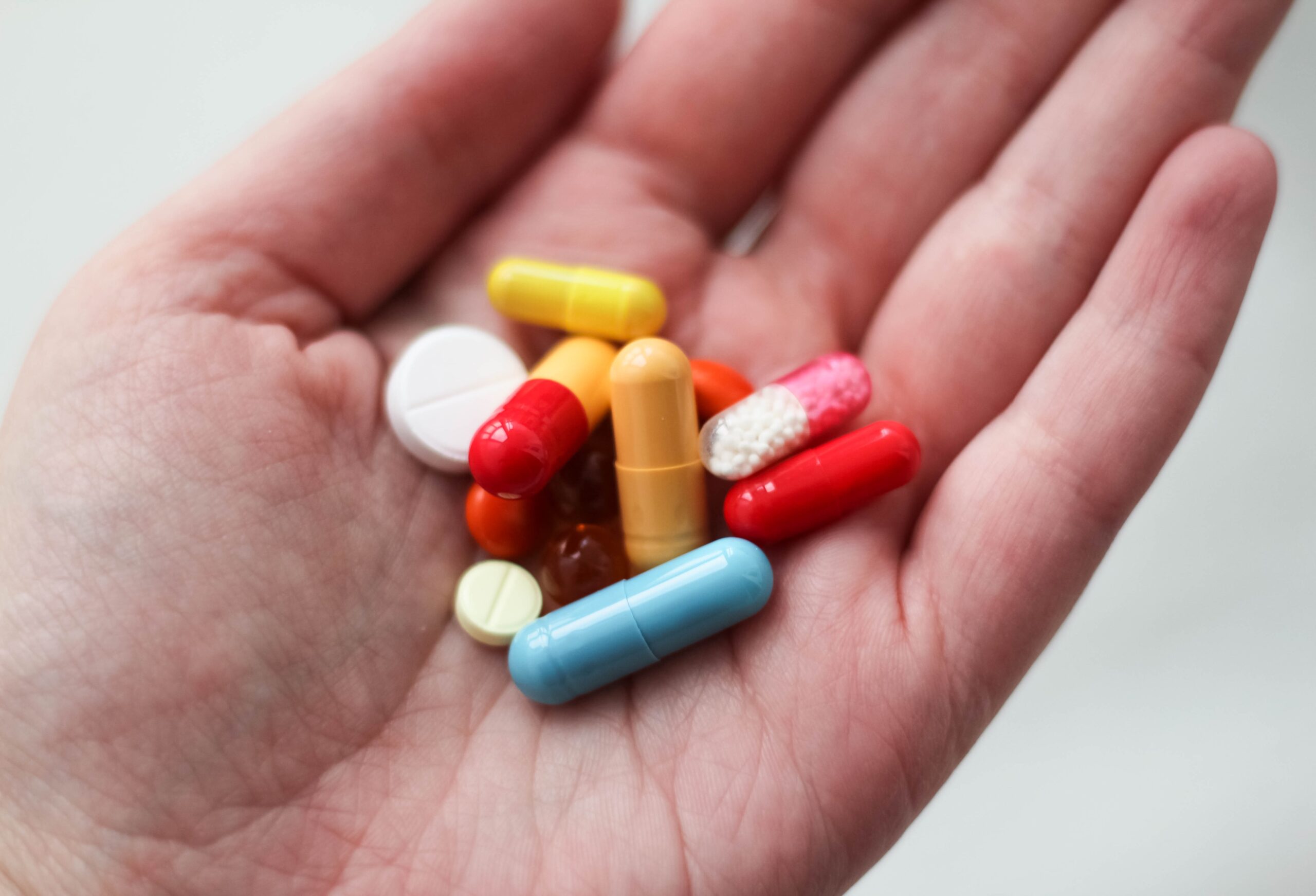
Medication –
If they’ve been previously identified as fearful, providing them with oral anxiolytic drugs that can be given at home prior to vet visits may be appropriate. Early use of these, before the dogs have been really sensitised to the vets is preferable to leaving it until they have become so fearful that they are defensively aggressive and are ‘unhandleable’ by vet staff.
There is a FAB Clinicians handout on short-term situational anxiolytics that vets can request by emailing office@fabclinicians.org. Many of these drugs are not licensed in dogs or only licensed for sound sensitivities alongside a behaviour modification plan. Their use in specific cases for fear at the vets needs to be justified. One such justification is in order to maintain the welfare of individuals in situations in which the licensed drugs are not effective.
- Dexmedetomidine gel (Sileo) is licensed for sound sensitivity and may be effective in reducing fearfulness at the vets, if the dog tolerates its application to their gums.
- Trazodone combined with gabapentin is generally effective if given the night before a morning appointment and repeated 2 hours before it. The effective doses for an individual needs to be worked out by trialling lower doses first and titrating up for subsequent visits as necessary.
- Incorporating alprazolam (Xanax) into a multi-drug combination has the additional benefit of an amnesic effect. The dog needs to be given some test doses prior to taking it for actual vet visits because of the wide variety of effect on different individuals. A low dose trial of approximately 0.01mg/Kg is recommended to ensure that the dog doesn’t experience paradoxical excitement or sedation. If ok on this, another trial of approximately 0.04mg/Kg is then recommended. Depending on the effect of this, a higher or lower dose can be used for real situations and it can be combined with other agents such as trazodone and/or gabapentin.
- Obviously, any contra-indications mentioned in the data sheets of the drugs need to be taken into account when deciding on drug combinations to use.
- If the dose of anxiolytics prescribed is insufficient for the young dogs to accept normal veterinary examinations without reacting fearfully, it is preferable to abandon the attempt and prescribe a higher dose for next time, as long as the medical condition is not very urgent and doesn’t need immediate treatment.
Consultations with fearful dogs –
All staff can help to avoid or reduce any stressors over which the practice has control:
The receptionists can obtain information about the history and behaviour of individual dogs, so that behavioural concerns such as fearfulness can be highlighted. They can request that owners of fearful dogs stay in the car with them before the vet or nurse is ready to see them, so that they don’t need to contend with the stress of the waiting-room.
If possible, they should be brought into a quiet consulting-room and the staff talk quietly and calmly to them and their owners. The dog should be given the opportunity to sniff and investigate the consulting-room floor. Unless they are likely to require an anaesthetic or sedation, or have a gastro-intestinal problem that would preclude their use, it’s helpful to scatter treats on the floor for the dog while they’re checking out the room. The vet or nurse can take a history from the owner prior to engaging with the dog.
If the dog is not showing aggressive behaviour, the vet staff can attempt an examination. In order to appear as unthreatening as possible, they should crouch down with their body sideways and gaze averted from the dog’s face and allow the dog to approach them voluntarily. If the dog does approach, the vet or nurse should reach their hand out slowly and gently stroke down the front of their chest, rather than reaching over their head. With slow, careful progression, a gentle examination may then be possible, while the owner offers the dog more treats if they are able to take them.
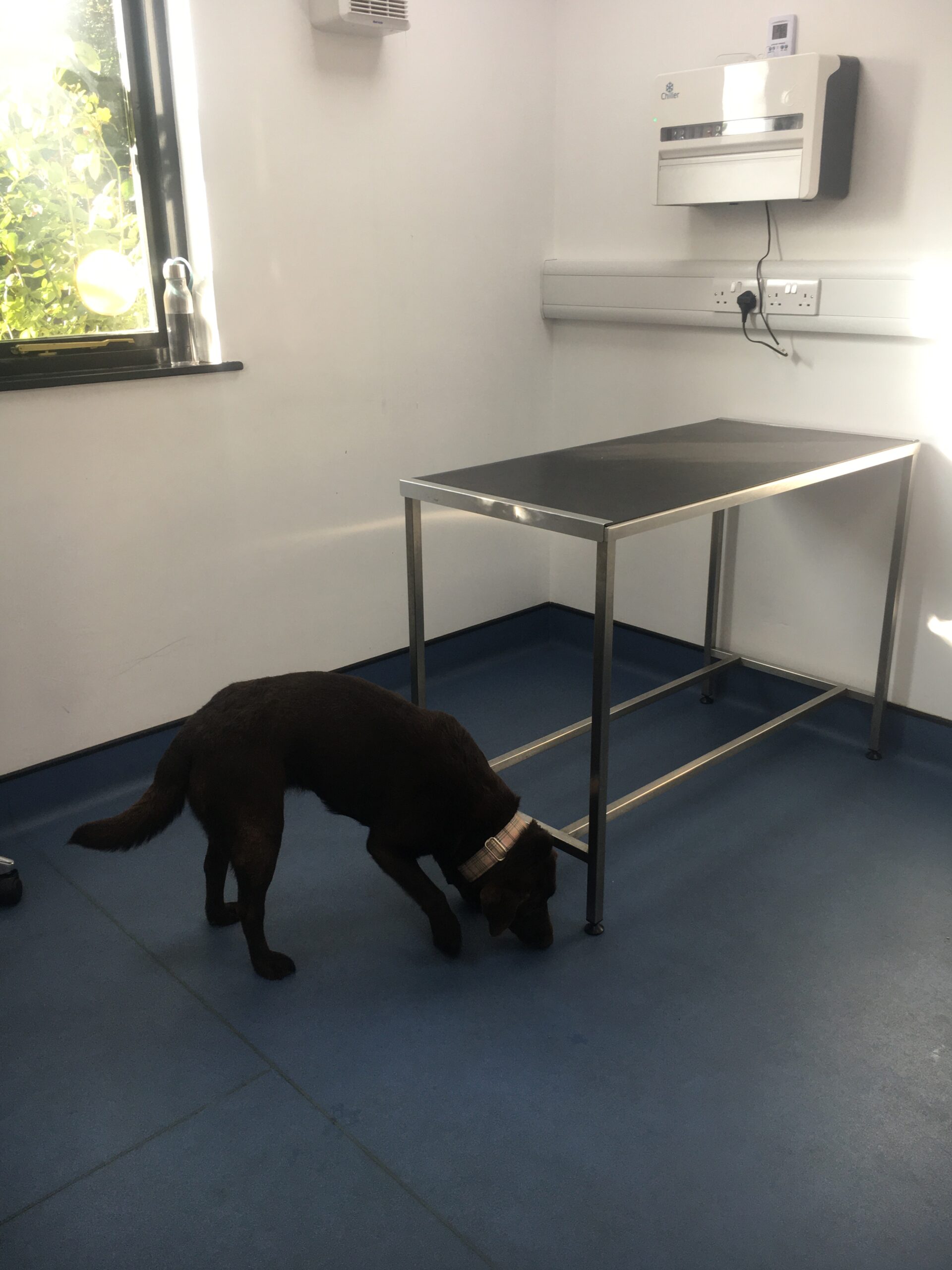
If the dog shows signs of extreme fear, unless it is a medical emergency, it may be safer and better for their welfare to perform a ‘hand’s off’ examination and prescribe analgesia or other appropriate medication, as well as pre-appointment anxiolytics and book them in for sedation in a day or so. This would enable a thorough examination and any further investigations to be carried out while avoiding further sensitisation of the dog to the vet experience and risk to the vet staff.
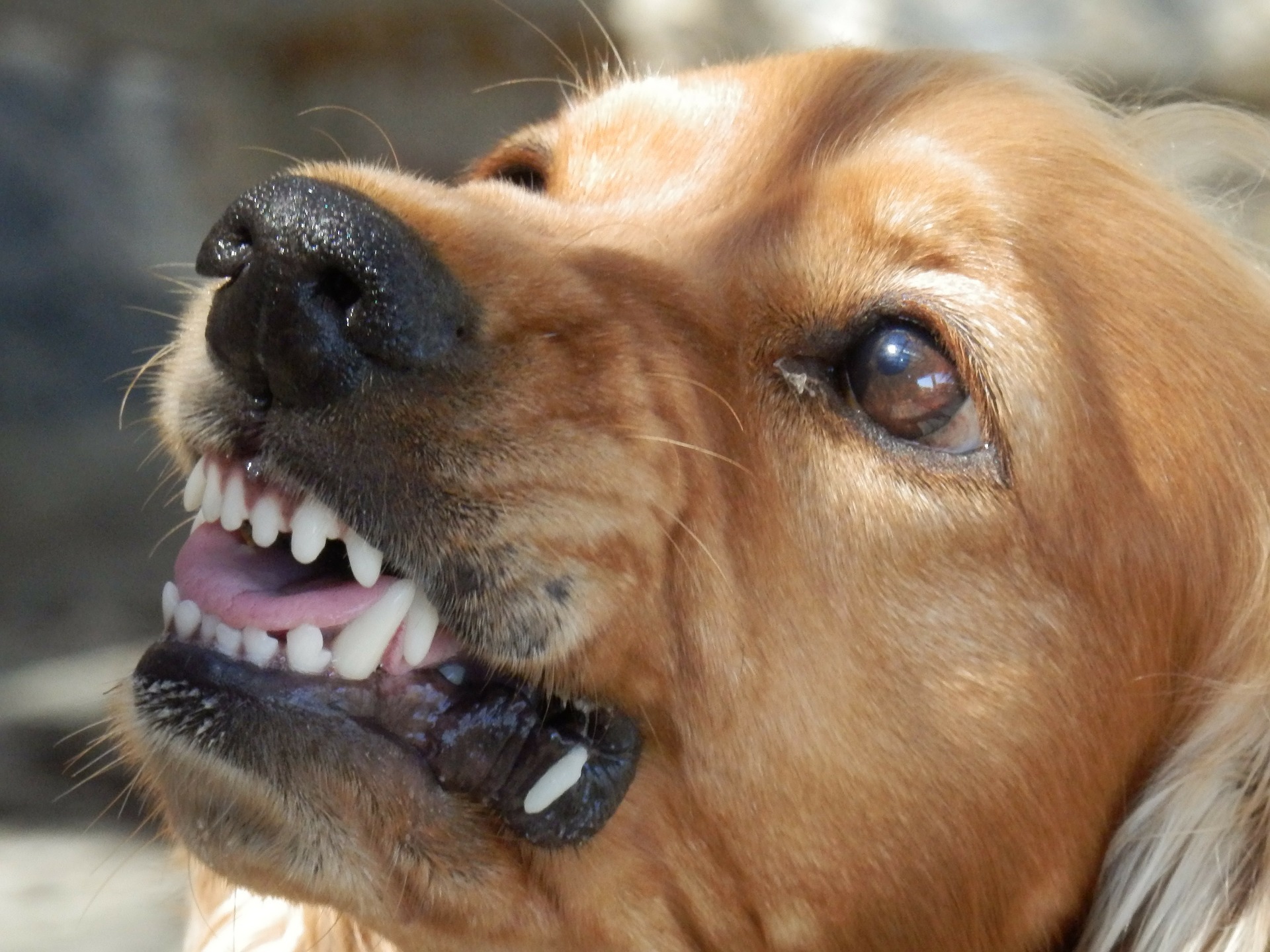
Owners of really fearful dogs (whether or not they are aggressive towards vets and nurses) should be counselled at the outset that the vet staff will try to minimise the stress their dogs are exposed to by using pre-consultation anxiolytics and sedation whenever required to avoid increasing their sensitivity to handling, examinations and treatment procedures. This will inevitably involve an increased cost.
If the owners are able to train their fearful young dogs to wear a muzzle using a fear-free reward-based method, it would be very helpful to enable them to be muzzled before their vet consultations, so they can be gently handled for sedative injections without additional stress to them or the veterinary staff. There are good training demonstrations on the websites of the major dog rescue charities. The Blue Cross have an excellent muzzle training one that owners can be directed to.
Neutering, or not –
There are several disadvantages to neutering adolescent dogs:
- Gonadal hormones play a role in normal brain development and maturation;
- The actual experience of neutering and the associating handling, hospitalisation and other stresses (including wearing buster collars or medical petshirts) can have a lasting effect on an adolescent dog’s perception of the practice.
- The reduction in testosterone caused by castration can reduce the confidence and increase the anxiety of fearful adolescent dogs.
- For a full discussion of all the factors involved with neutering, please refer to our FAB Clinicians Q&A recording and slides by Caroline Warnes. https://fabclinicians.org/wp-content/uploads/2021/09/FABC-Neutering-and-behaviour-webinar.pdf
Behaviourist involvement –
Some owners would benefit from referral to an ABTC-registered clinical animal behaviourist to help them work on reducing their dog’s anxiety in all relevant situations, as well as muzzle training and co-operative care training to facilitate future vet visits. https://fabclinicians.org/find-a-behaviourist/ The CAB may also recommend that long-term anxiolytic medication is given, and referring vets can obtain advice about this from veterinary behaviourists when necessary.
Co-operative care –
This is a means of providing a dog with control over the handling they experience. They therefore do not feel ‘trapped’ as they learn that they can control how much is done to them at each stage.
This training needs to be done alongside desensitising the dog to the veterinary practice, starting with the journey to the practice, then being in the carpark, before entering a consulting-room. At each stage, enjoyable activities and high value food treats and games are associated with the various locations.
Preventing fearful puppies from becoming anxious adolescents at the vets–
So far, we’ve been considering how to deal with the cohort of anxious adolescents whose early months were spent in the Pandemic. Now we need to consider how to work with fearful puppies at any time, to reduce the risk of them also becoming anxious adolescents.
When puppies are first presented to veterinary practices, if they show signs of fear they should be handled very carefully and gently. A new narrow gauge needle should be used to administer their vaccinations and the injections given while they are being fed treats by their owner or licking liver paste of squeezy cheese from the table, if they’re able to take these.
If a puppy is wary about handling, the owners can be advised to work on gently habituating them to handling at home, on the floor and on a table, using a consent-based method.
Any puppies should be invited for social visits to the practice when they’ve completed their vaccination course. This will enable them to have pleasurable experiences at the practice by associating games and treat with various aspects of the veterinary experience:
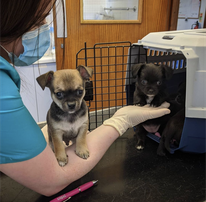
- Exploring the waiting-room when it’s quiet
- Exploring the consulting-room floor
- Being gently handled by veterinary nurses and lifted onto the consulting room table
- Being gently introduced to equipment such as stethoscopes
- Being sensitively trained to get on and off the weighing scales
This will build a bank of positive experiences so that later exposure to somewhat unpleasant ones such as a vaccination injection or anal gland expression won’t have a significant effect on their perception of the vets.
We also have a handout you can download giving helpful advice for breeders on how to produce emotionally balanced puppies

